Rucking is walking with a loaded backpack – and not just in the woods!
“Ruck”, short for “rucksack”, is military slang for a backpack.
This is a cheap, simple exercise that burns calories and builds aerobic endurance due to the added weight.

- Grab a backpack.
- Load it with about 10% of your bodyweight (as a beginner). You can use bricks, dumbbells, weight plates, or anything else that will fit.
- Walk – the distance and pace is up to you.
Also known as foot marching, ruck marching, but usually just plain “rucking” –
it’s deceptively effective. It sounds simple, but it can burn up to two times the number of calories when compared to an unweighted walk.
What’s more, it can benefit your posture and back strength. It’s common to use weight plates or other compact items for the necessary weight. Specially designed rucking weight plates are also available.
A ruck is short for rucksack (military slang for a backpack.) It can also mean the action of rucking or going on a ruck march. For example, you might say: “I rucked 10 miles yesterday with a 20lb weight in my backpack.”
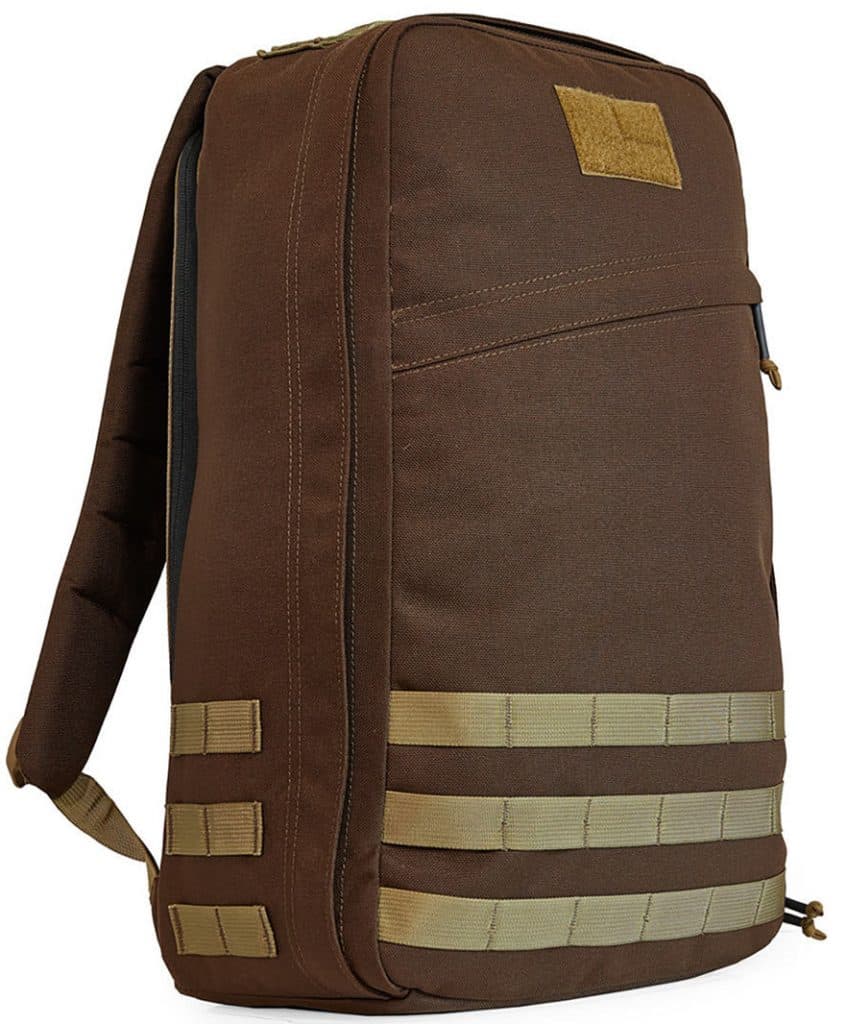
Why does Rucking work?
The additional weight in the back pack challenges your endurance – and makes the biggest muscles of your body – in the legs and back – work that much harder. Your heart rate will be up and therefore more calories are burned. How fast should you be going? The US Army standard requirement for pace is 15 minutes per mile, but that’s just a good yardstick. More weight or more speed will bump up the calorie burn, and the exertion. And it’s still a great workout even if you go slower.
How many calories does rucking burn?
The calorie burn for rucking will depend on:
- How much weight you are carrying,
- How fast you are walking,
- How far you are going.
Cross country hiking can burn 266 calories in 30 minutes (for a 185 lb person) – so that’s probably a pretty good estimate for the average person.
Want an accurate estimate for you? Use a Heart Rate Monitor (HRM) while you ruck, or an estimating smartphone app.
What equipment do I need for Rucking?
Footwear is the most important item to start with. Depending on the terrain you plan to cover will dictate whether you choose boots or running shoes.
The roots of rucking lie deep in the military – where long hikes with heavily loaded backpacks are the norm. Timed ruck marches are used to prepare soldiers to be able to move themselves, and their essential gear, for long distances quickly.

Beyond that, the essential gear is a backpack and some weight (bricks, weight plates, sand, ruck plates, etc.) It’s not really practical to carry the weight in your hands, as your grip will tire out long before you get very far. You will also tire of people asking you why you are carrying a weight.
There is a lot of interest in rucking, and there are rucking accessories that you may find helpful as well.
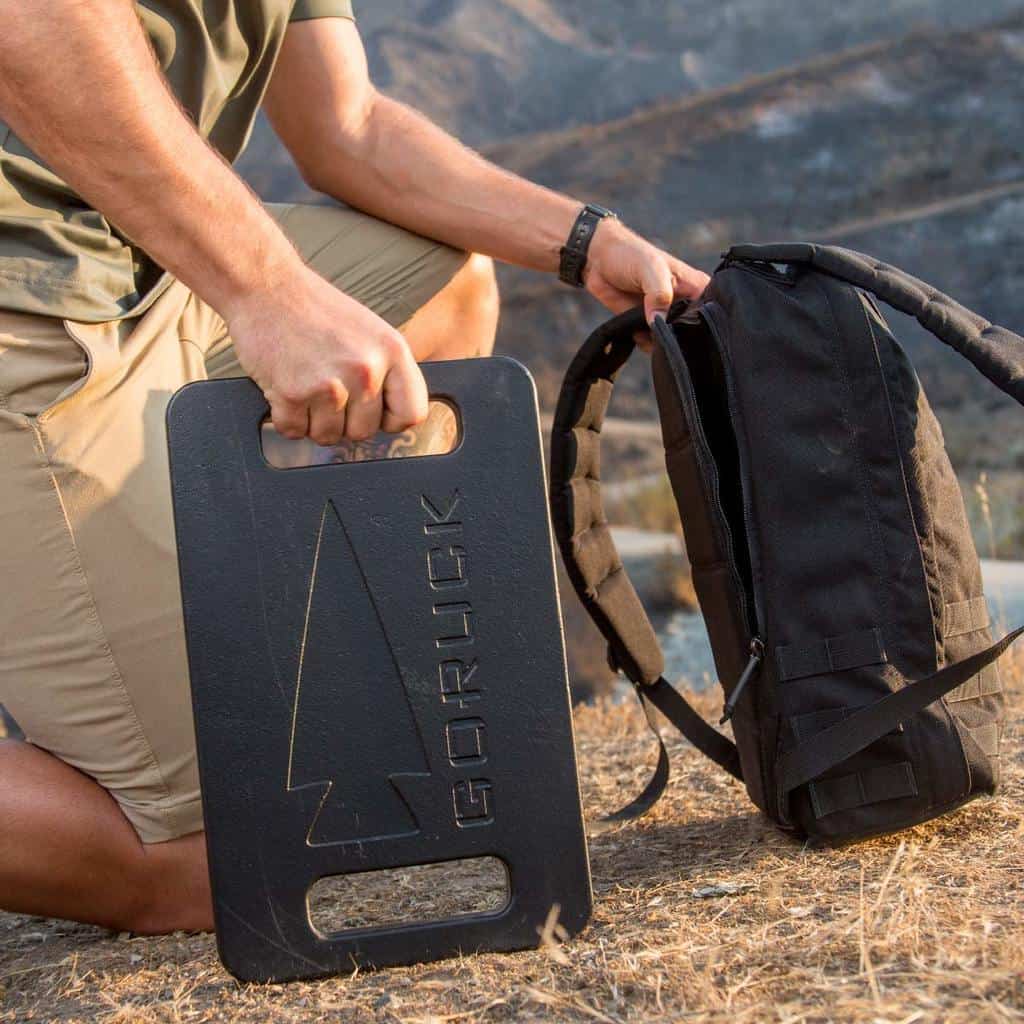
Don’t have rucking weight plates? Here’s some other ideas
- Bricks (Use up to 3. Tape the edges so they don’t damage your backpack.)
- Water bottles (Full, in case that isn’t clear)
- Standard barbell plates
- Sand bags
- Rocks (conveniently shaped ones, at least)
- A fitness weight vest, or ballistic plate carrier
Just remember, an oddly shaped object is going to be painful to ruck – it’s going to become very uncomfortable quickly.
- Simple but effective – nearly anyone can walk
- Special and expensive equipment or training not required
- Gets you outdoors and in the real world
Rucking, like any other fitness activity, has sparked a plethora of premium equipment vendors. You can get special rucking weight plates, which add the weight in a space saving form factor (leaving room for other gear and providing more comfort), highly specialized rucks with extra features, and hydration bladder packs. Some of these options are very expensive.
Regarding footwear – unless you have a specific need to train in boots or otherwise expect to ruck-march for real you can wear shoes that are comfortable and appropriate for the task at hand. When boots aren’t required or desired, running shoes are popular. Trail running shoes work in a lot of situations also.
In our opinion, the first upgrade after proper footwear should be a backpack which you can wear comfortably for long time periods.
And any time you are rucking for distance be sure to take care of your feet. They are going to bear the brunt of the wear and tear of rucking. So beware of blisters – proper footwear, toesocks, and anti-chafing creams can all be good ideas in this case.
And let’s not forget about hydration. Ruck for any serious distance and you are going to need to drink water. Carrying it with you in bottles is fine, but on longer rucks you’ll tire of having to stop, drop the pack, drink, and put it back on. It’s sort of a momentum killer – especially when you are fatigued. As such, many people opt for a hydration bladder. These let you drink on the move.
Ruck Workout Ideas
Need some ideas for a Rucking workout? How about these:
- Walk for 2 miles, with about 20 pounds
- Take a hike through a local park. Along with the weight, take a camera, in case you see wildlife or anything else worthy of a photo.
- Perform a few rounds of tabata before you go on your ruck. This will really prime your heart rate, and burn extra calories.
- On business travel? Carry your laptop and associated gear in a backpack. You can get a brisk workout in when walking from one gate to another at those large airports (especially Frankfurt and Munich).
- Ruck up a steep hill – that will be killer – and you’ll also get a great eccentric workout on the downslope.
And last, but not least, ruck with a group – rucking isn’t meant to be a solo activity!
Want more options? How about the GORUCK Challenge? It comes in 3 flavors:
- Light – 4-5 hours, 7-10 miles, with 10 lbs or 20 lbs.
- Tough – 10-12 hours, 15-20 miles, with 20 lbs or 30 lbs.
- Heavy – 24+ hours, 40+ miles, with 20 lbs or 30 lbs. This option typically has only a 50% completion rate
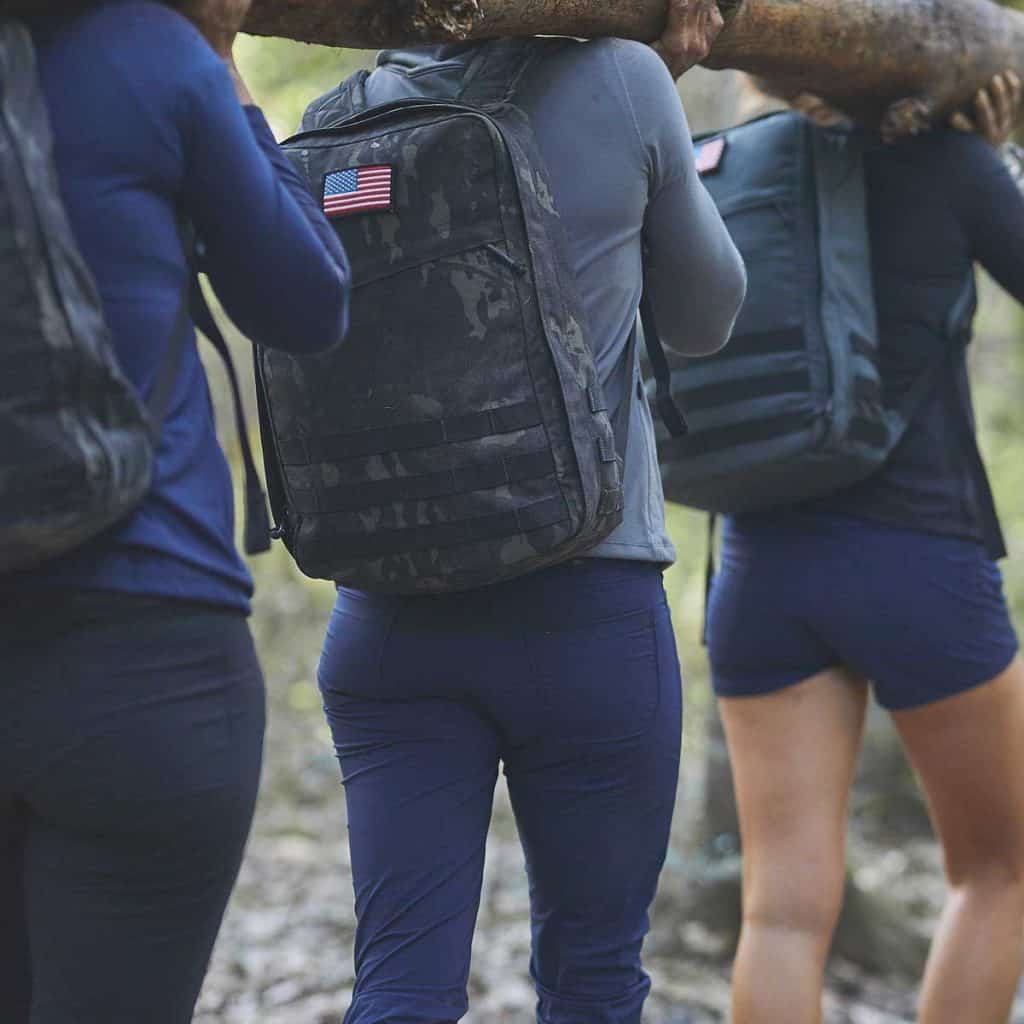
GORUCK events can be much more than a ruck march though – there are certain events that are led by ex-special forces cadre. And that’s when the real fun begins.
Expect team building challenges, and a lot of additional PT (physical training).
You might have to lug a large object (or objects – logs, sand bags, water jugs) as a group also.
And if you’ve done all those events – and still want more – how about an HTL event? That’s a Heavy, followed by a Tough, followed by a Light, with nothing but a “brief” rest in between. At 70 miles total, with a considerable weight rucked, it’s considered a very significant GORUCK achievement.
But there’s also an event GORUCK calls Selection. It’s a brutal test of endurance (both physical and mental) with a drop out rate of near 100%. It’s meant to mimic Special Forces training. It’s normal that only 1 person successfully finishes Selection in any given year (out of 100 or more participants.)
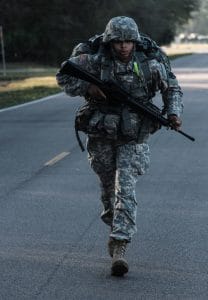
Why choose Rucking?
It doesn’t get any simpler (and cheaper) than this (well, maybe walking). But the simple addition of a small amount of weight really turns up the calorie burn. It’s cheap, efficient, and that works for us.
Is rucking better than jogging or running?
It’s a great “roadwork” option that’s low impact and far easier on the joints than jogging or running. Rucking is an especially good option for larger body frames.
And in addition, jogging or running does not build any upper body strength.
You’ll be out in the real world – not on a treadmill, and not stuck in one spot.
It can also be a fun social activity and builds a sense of being part of a team. Check out GORUCK’s events page to find an event near you.
Need some more reasons rucking is great? Watch this video from GORUCK:
We’ve already explained we love rucking because of the practicality – it’s cheap, effective exercise that doesn’t require advanced techniques or training. But for midlifers – it’s excellent exercise. It’s low impact and it works for any body frame or type. Compared to jogging or running it’s going to be a lot better option for the majority of people.
How do I progress with Rucking?
There are three ways to progress:
- Carry more weight
- Carry it faster
- Carry it for further distance
Go conservative – don’t try to add more than 10% at a time – in weight, speed, or distance. In the long run, slow and steady wins the race.
What’s the most weight you should ruck? 50 lbs (for considerable distances) is considered “expert” level. Much beyond that and you are going to get more of a deleterious effect than intended. If you’re going to use a lot of weight, just getting the pack in place (and off again) properly is an opportunity for an injury, especially when you are fatigued – so be careful. A light to moderate weight with a faster pace is probably a better option than more weight, and will be easier on the joints.
The military considers up to 45% of your body weight acceptable for “non-contact” road marches, and up to 30% acceptable for combat operations. Troops in Afghanistan and other real world conflict areas sometimes lug up to 127 lbs of gear in some very challenging terrain. Would you like to walk a mile in those shoes? Rucking may give you a new appreciation for our soldiers.
But, this isn’t “ruck-running”. In general, you shouldn’t be jogging or running with the extra weight. That’s asking for an injury.
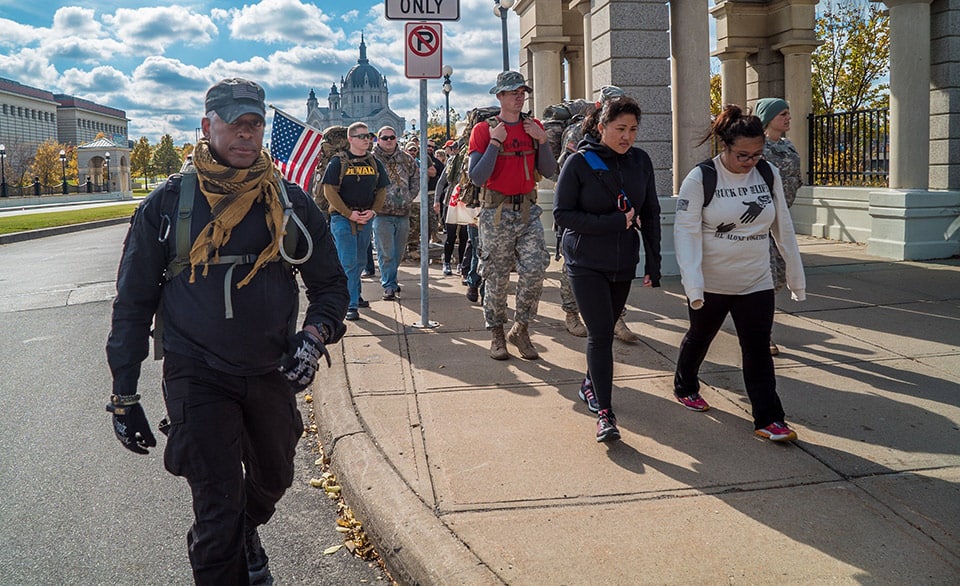
Which Apps Should I Use For Rucking?
People often ask – what sort of smartphone app should I use for rucking?
First of all, apps are optional. All you really need to know – how far did you go and how long did it take?
But, if you want to use an app – honestly any hiking or running app that uses GPS will be just fine.
The key things to look for: GPS location tracking and timing (how long did it take you, etc.) – distance, pace, and elapsed time.
It’s also nice if you can keep a history of your rucks. Bonuses are elevation changes, calorie burn estimates, etc.
Popular choices include:
- Strava
- MapMyRun
- Nike+
- MotionX-GPS
- RunKeeper
A heart rate monitor (HRM) isn’t a bad idea either.
Just remember that not all GORUCK challenge events are smartphone friendly or even watch friendly. In some cases there is significant water immersion and in other cases the cadre (leader of the ruck) forbids all electronic devices. But these all work great for your training rucks.
Rucking – Go Try It!
Here’s our favorite part – go out and try it and let us know what you think. Comment below, or share with your friends. Rucking really turns up the heat on a simple concept, and it’s fun!
We’re a GORUCK affiliate – so if you order equipment after clicking the links in this article we receive monetary compensation. But that’s not why we recommend GORUCK. It’s because their equipment is innovative, built to last, and made in America. They are the driving force behind rucking not just as exercise, but as a way to make people better. And that’s why we love them.
Rucking References
- Calories burned in 30 minutes for people of three different weights
- Various, “FOOT MARCHING, LOAD CARRIAGE, AND INJURY RISK”, TECHNICAL INFORMATION PAPER NO. 12-054-0616
Rucking Photo credits
- photo credit: 143d Sustainment Command (Expeditionary) 143d ESC 2017 BEST WARRIOR COMPETITION, PART 4: PRIDE via photopin (license)
- Equipment photos courtesy of the manufacturers.

Tim is the founder of FitAtMidlife.com – an avid gym rat for 30+ years, he’s a reviewer of many, many shoes – and founder of the Speed Bag Gathering – the world’s only gathering of speed bag punching enthusiasts. See more gym reviews at Tim’s YouTube channel.

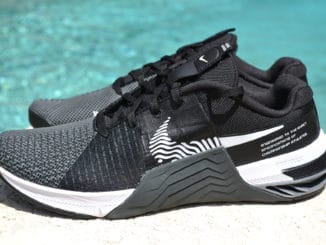

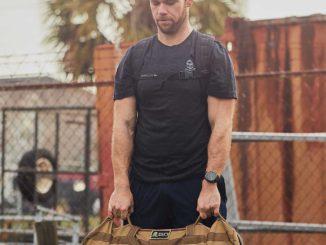
Rucking is when a person in the military moves his or her gear in a backpack. When you enlist, your first “encounter” with rucking (or ruck marches) will be in basic training. The goal is to ruck 12 miles (or 19 kilometers) in three hours. Usually, the load will be 35 pounds, but it also depends on the type of load.